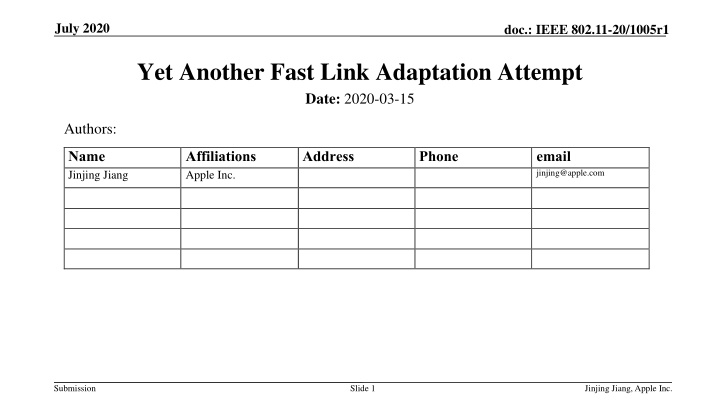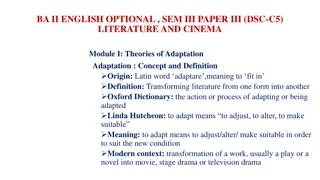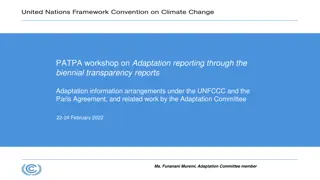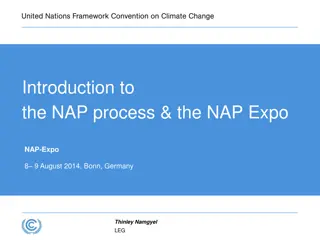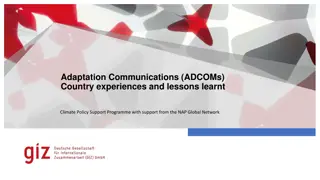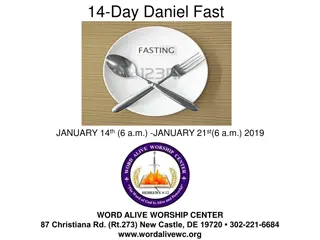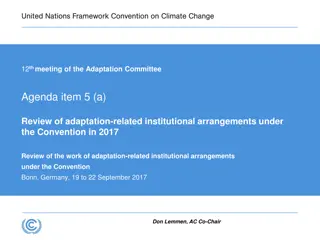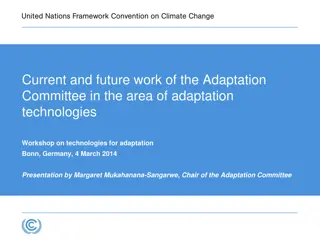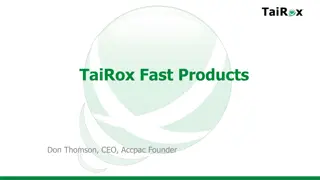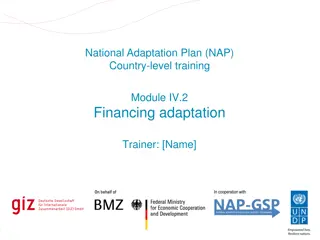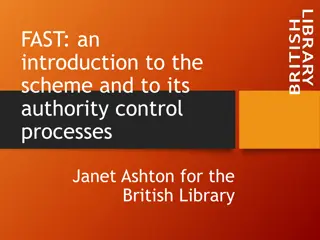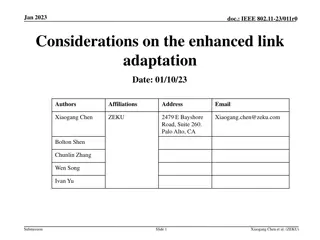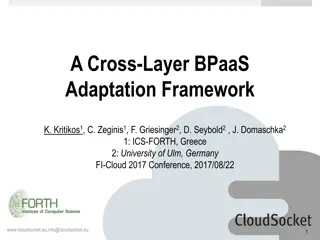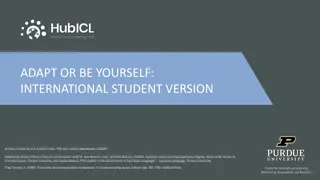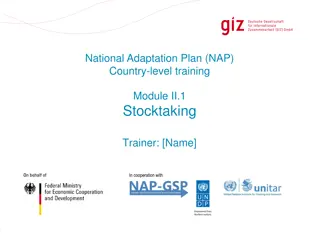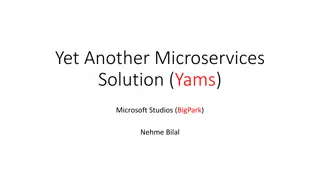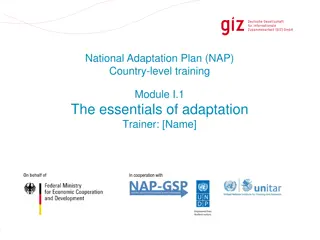Yet Another Fast Link Adaptation Attempt
This submission discusses new methods for enabling Fast Link Adaptation and provides recommendations to overcome implementation challenges. Topics include open-loop control systems, sampling-based algorithms, close-loop control systems, and more.
Download Presentation

Please find below an Image/Link to download the presentation.
The content on the website is provided AS IS for your information and personal use only. It may not be sold, licensed, or shared on other websites without obtaining consent from the author.If you encounter any issues during the download, it is possible that the publisher has removed the file from their server.
You are allowed to download the files provided on this website for personal or commercial use, subject to the condition that they are used lawfully. All files are the property of their respective owners.
The content on the website is provided AS IS for your information and personal use only. It may not be sold, licensed, or shared on other websites without obtaining consent from the author.
E N D
Presentation Transcript
July 2020 doc.: IEEE 802.11-20/1005r1 Yet Another Fast Link Adaptation Attempt Date: 2020-03-15 Authors: Name Jinjing Jiang Affiliations Apple Inc. Address Phone email jinjing@apple.com Submission Slide 1 Jinjing Jiang, Apple Inc.
July 2020 doc.: IEEE 802.11-20/1005r1 Abstract In this submission, new methods to enable Fast Link Adaptation are discussed and recommendation is provided to break the curse of Nobody Implements It Submission Slide 2 Jinjing Jiang, Apple Inc.
July 2020 doc.: IEEE 802.11-20/1005r1 The Art of Link Adaptation Open Loop Control System via Sampling-based algorithm Sampling specific MCS index, NSS, GI, Bandwidth etc. over certain probing interval Heuristically derive the next rate based on packet loss, throughput and so on Huge System Bring up effort! Algorithm Design Parameter Tuning + Submission Slide 3 Jinjing Jiang, Apple Inc.
July 2020 doc.: IEEE 802.11-20/1005r1 Fast Link Adaptation Close-loop Control System via Computation-based algorithm MCS feedback mechanism via HT/VHT/HE Variant HT Control field [1-3] 1, MCS Feedback Request 4, MCS Feedback Response TX RX 2, monitor the received packets or channel characteristics 3, compute optimal MCS Submission Slide 4 Jinjing Jiang, Apple Inc.
July 2020 doc.: IEEE 802.11-20/1005r1 The Curse of Nobody Implements It RX computes the optimal MCS under the assumption to maximize the throughput TX s algorithm may choose to use lower MCS to reduce retransmission Hardware Limitations Delayed feedback may not be useful In case of immediate feedback, not all the hardware can finish the computational task in time Even it can finish, the result may not be trustworthy Different Assumption at TX and RX Submission Slide 5 Jinjing Jiang, Apple Inc.
July 2020 doc.: IEEE 802.11-20/1005r1 Antidote 1: Prefer Measurement over Computation Feedback PHY handy measurement results rather than MCS. For example, RSSI CSI: SNR per stream, SNR per RU Codeword Error Rate Submission Slide 6 Jinjing Jiang, Apple Inc.
July 2020 doc.: IEEE 802.11-20/1005r1 Antidote 2: Negotiated Support Establish trust between TX and RX on feedback results At least devices from the same ecosystem can faithfully utilize the feedback Define measurement accuracy capabilities Feedback support negotiation with different levels Level 0: feedback based on certain criteria [4] Ex: limited connectivity, RTS/CTS request Level 1: measurement feedback Ex: RSSI, CSI, etc. Level 2: computation feedback Ex: genie MCS Submission Slide 7 Jinjing Jiang, Apple Inc.
July 2020 doc.: IEEE 802.11-20/1005r1 Antidote 3: Immediate Feedback Existing Methods Control Wrapper for ACK, Compressed BA frame Only available for HT/VHT, rarely implemented Compressed BA + QoS Null with A-Control: HE QoS Null frame processing is not mandated, big overhead for 26-bit A-Control New method: Enhanced Multi-STA BA frame Define Per AID TID Info with AID11>2007 to new meanings, i.e., link adaptation feedbacks Negotiated Usage Enhanced Multi-STA BA frame support is signaled in Extended Capabilities for 11ax devices and newer generation devices Using reserved bits in ADDBA Extension element, ADDBA exchanges set new an additional BA Parameter if using Multi-STA BA for the whole session Submission Slide 8 Jinjing Jiang, Apple Inc.
July 2020 doc.: IEEE 802.11-20/1005r1 Enhanced Multi-STA BA Frame Use any AID11>2007 to signal non- block-ack session related information using TLV format Submission Slide 9 Jinjing Jiang, Apple Inc.
July 2020 doc.: IEEE 802.11-20/1005r1 Summary We recommend to adopt the negotiation-based immediate feedback of PHY measurements for fast link adaptation. Submission Slide 10 Jinjing Jiang, Apple Inc.
July 2020 doc.: IEEE 802.11-20/1005r1 Straw Poll Do you agree to enhance the usage of Multi-STA BA frame to include information beyond MPDU acknowledgments by assigning new meanings to Per TID AID Info with AID>2007? Y N A Submission Slide 11 Jinjing Jiang, Apple Inc.
July 2020 doc.: IEEE 802.11-20/1005r1 References [1] Next Generation Wireless LANs: 802.11n and 802.11ac, Eldad Perahia and Robert Stacey, Cambridge University Press [2] IEEE STD 802.11-2016 [3] IEEE STD 802.11ax D5.0 [4] Temporary-Limited-Connection, Matthew Fischer, 2019, available at https://mentor.ieee.org/802.11/dcn/19/11-19-0306-05-000m-temporary-limited- connection.docx Submission Slide 12 Jinjing Jiang, Apple Inc.
